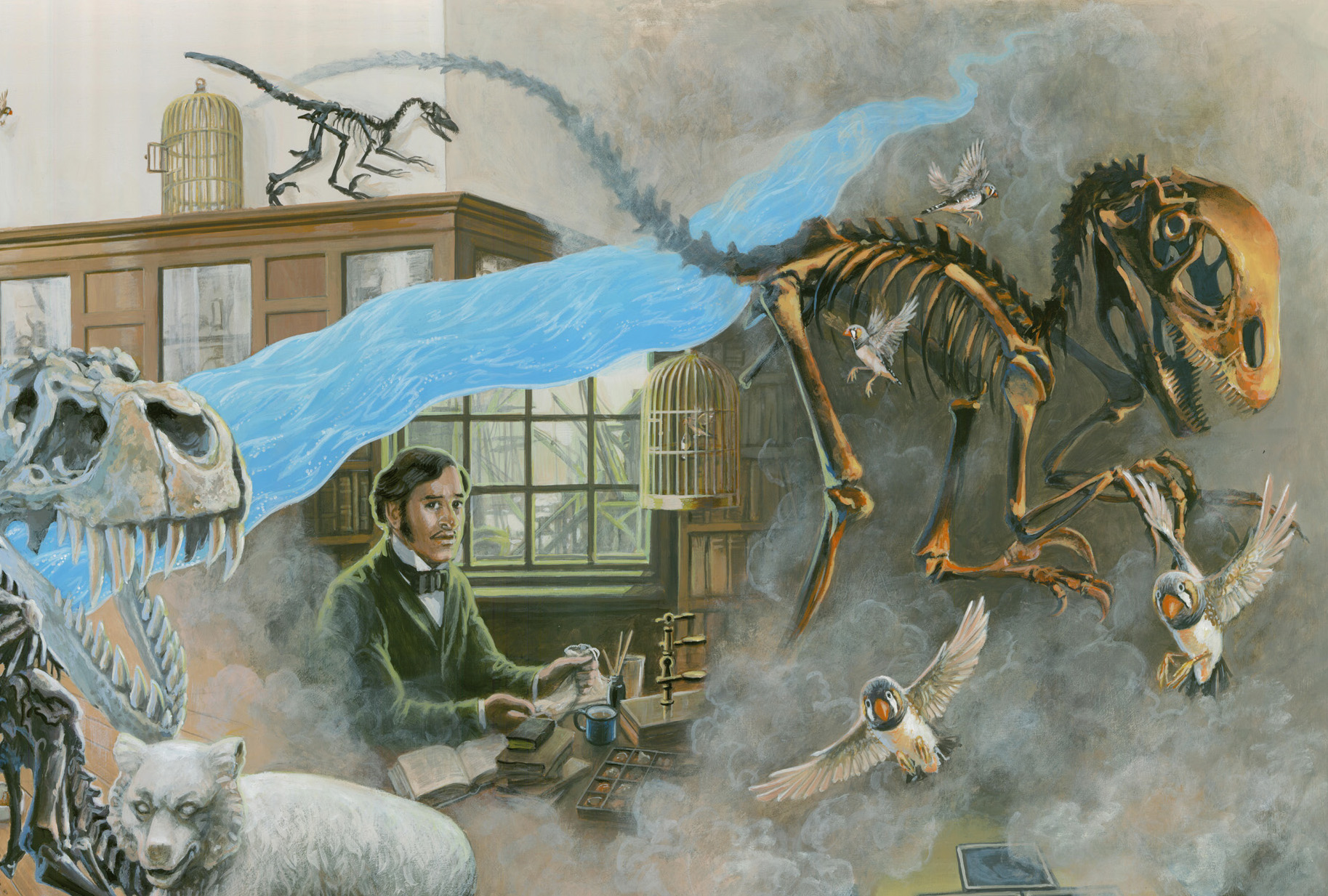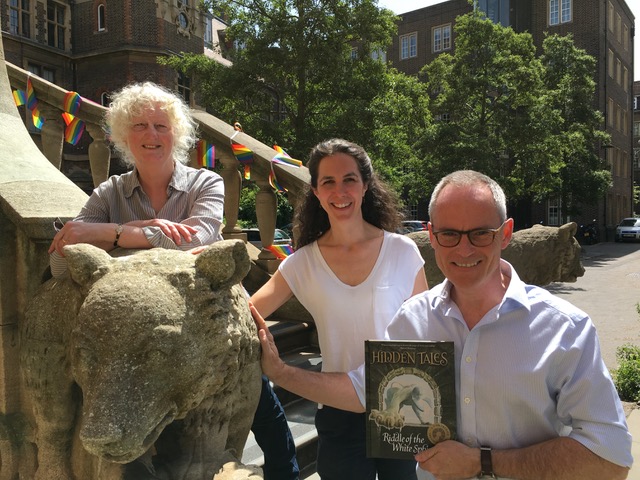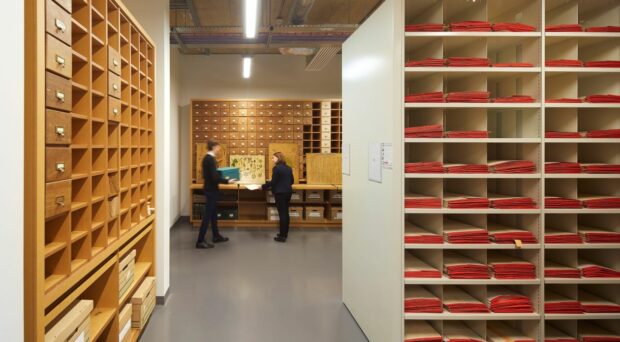This summer, young visitors to some of the University of Cambridge Museums had the opportunity to participate in an exciting artist-led treasure hunt. Hidden Tales: the Riddle of the White Sphinx, created by Mark Wells and Sorrel May, and illustrated by Jennifer Bell, encourages families to explore our museums in a different way…. here, author Mark Wells tells all.
How do you write a modern-day treasure hunt book for children? To be honest, when I was asked this question by my friend Sorrel, I didn’t have a clue, but it sounded fun! So, one Sunday morning, I set out off my bike and cycled into the city looking for inspiration.
Finding myself outside the Fitzwilliam Museum, I wandered inside and took out one of the excellent audio guides to explore the exhibits. When I turned on the device and heard the disembodied voice of the curator welcome me inside, the idea for the storyline popped into my head.

What if two children walk into a museum and come across a hidden entity that only they could hear? And by solving a series of clues, they and the reader could rescue the souls trapped in the mysterious World of Secrets from its sinister Keeper!
I knew I was onto something, and that evening, I wrote the first chapter which I sent to Sorrel to read to her children. They loved it, and the Hidden Tales adventure had begun!
I quickly realised that Cambridge’s many museums would be ideal locations for the portals: places where the Hidden (and the Keeper!) can travel back and forth to the World of Secrets. Not only are the buildings themselves incredibly atmospheric, but they are also packed full of historical characters I could use for the story. Plus, they are free to enter and accessible to all.
So, each weekend, I would visit a different museum and choose which artefacts I could use for clues. Then we found an artist, Jennifer Bell, for the illustrations, and a letter designer, Fiona Boyd, to create a Hidden alphabet. The museum teams were also incredibly generous with their time in reviewing each of the chapters, as were Arts Council England, who agreed to fund the first book. Pulling all the strands together was great fun, including the book’s title, Riddle of the White Sphinx!

In keeping with the adventurous nature of the Hidden Tales, we wanted the book’s launch to be an interactive experience for children. So, we decided to host it at the Sedgwick Museum of Earth Sciences, where the staff agreed to host an after-hours treasure hunt around the exhibition hall for 80 Golden Ticket holders from local schools. The launch was a huge success with over 300 people attending on one of the hottest days of the summer. The families who came enjoyed meeting the team, seeing the original artwork, making badges, drawing creatures, sticking pins in maps and feasting on Fitzbillies Chelsea Buns.

Local schools also got behind the project, with over 30 running Hidden Tales lessons and inviting me in to talk about the book. The momentum continued into the holidays with Hidden Tales events at the Fitzwilliam Museum and Polar Museum, as well as Heffers and the Big Wednesday on Jesus Green. All the museums have been reporting excited families arriving with their copies of Riddle of the White Sphinx, eager to get their coded stamps and solve the clues. We even had endorsements from Michael Morpurgo and Mary Beard, who both loved the book. As a result, it’s been flying off the shelf in local bookshops: in the first month alone, we sold 80% of what we planned to sell in the first year!
So, if you fancy taking your family on an adventure, get yourself a copy of Riddle of the White Sphinx and head off into Cambridge. But be warned… you may never visit a museum the same way again!
Find out more about Hidden Tales.







